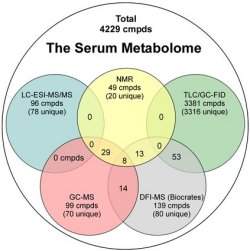O HPV (papiloma vírus humano) é transmitido por relações sexuais na maioria das vezes, e pode causar lesões na pele e nas mucosas.
A pesquisa acompanhou por quatro anos 4.074 homens de 18 a 70 anos do Brasil, dos EUA e do México.
Eles tiveram amostras recolhidas do pênis e do escroto submetidas a análise. Dos 50% com HPV, 30% tinham o vírus que pode levar a câncer, 38% tinham o não cancerígeno, e o restante tinha mais de um tipo de HPV.
Há mais de cem tipos de HPV, mas a maioria é inofensiva e assintomática.
As altas taxas de contaminação nos homens, superiores às das mulheres, surpreendem. Na população feminina, mais associada ao HPV, a taxa média de contaminação é de 14%, compara a pesquisadora Luisa Villa, do Instituto Ludwig, responsável pelo estudo no Brasil.
"Antes, acreditava-se que os homens tinham menos HPV, que as infecções ocorriam em menor proporção. Mas eles também têm infecções, e em taxas mais elevadas do que as mulheres."
Apenas recentemente é que começou a se estudar sobre o HPV no homem. Um dos motivos para isso é que, nas mulheres, as consequências das contaminações são mais graves, como o câncer de colo de útero -segundo tumor mais frequente, depois do de câncer de mama.
"Os homens foram deixados de lado. São o vetor do vírus, mas as mulheres têm mais doenças por causa dele", diz Glauco Baiocchi Neto, diretor de ginecologia oncológica do A.C. Camargo.
O risco aumenta com o número elevado de parceiras e com a prática de sexo anal.
As chances de ter HPV que pode evoluir para um câncer aumentaram 2,4 vezes em homens que tinham tido mais de 50 parceiras, e 2,6 vezes em homens com pelo menos três parceiros.
 |
| Clique na imagem para visualizar |
MAIS IMUNIDADE
Outra novidade da pesquisa é que, entre os homens, o risco de adquirir o vírus é constante, dos 18 a 70 anos. Entre as mulheres, o risco é maior até os 25 anos e tende a diminuir com o tempo.
Segundo o estudo, ainda não se sabe o porquê dessa diferença, mas há hipóteses.
Uma é que o número de parceiras sexuais do homem é constante por toda a vida, o que faz com que aumente sua exposição. Por outro lado, essa maior exposição poderia criar uma resposta imune que os protege de outras infecções subsequentes.
PREVENÇÃO
O estudo frisa a importância da vacinação contra HPV em homens de todas as idades, como prevenção.
Estudo recente publicado no "New England" e feito em mais de 18 países, incluindo o Brasil, mostrou que a vacina contra o HPV pode ser eficaz também em homens.
Mas sua aplicação em homens só foi aprovada em alguns países, como EUA, Panamá, Equador e Austrália.
O Brasil usa dois tipos de vacina contra o HPV, só em mulheres. São encontradas em clínicas particulares e indicadas a meninas e mulheres entre nove e 26 anos, mas não excluem a necessidade do Papanicolaou para prevenção do câncer.
Camisinha reduz o risco, mas, diz o urologista Alvaro Sarkis, não protege 100%.
Para Jorge Hallak, professor de urologia da USP, a melhor prevenção é a circuncisão, que diminui em mais de 70% as chances de contágio.






